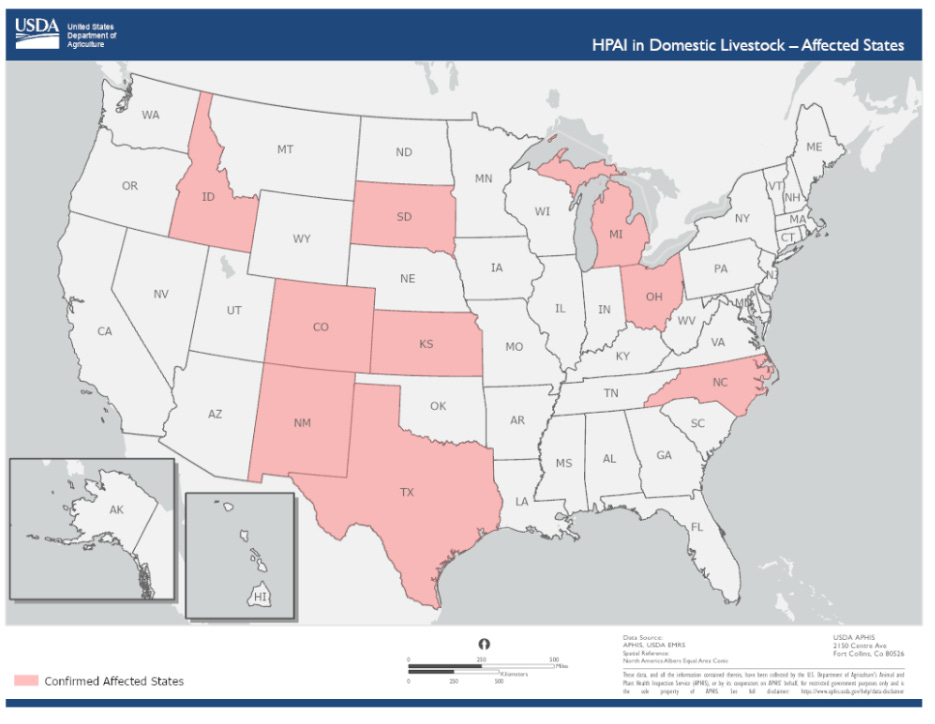The avian flu virus that has infected wild birds & mammals with recent spread to dairy cattle herds currently presents a low risk to human health but is an evolving situation that deserves monitoring.
I recently heard Dr. Ashish Jha, former White House COVID-19 Response Coordinator (and excellent science communicator), say something like: “Highly pathogenic avian flu should take up about 2% of your brain at all times, no matter what else is going on.” This is because while the threat to human health from this virus is generally low, as it is now, it has major pandemic potential. The flu pandemic of 1918 (archived link) was a highly pathogenic avian flu that killed an estimated 50-100 million people worldwide and inspired the National Strategy for Pandemic Preparedness.
The current type of avian flu found in cattle (H5N1) lacks a mutation that was present in both the 1918 and 2009 flu viruses that allowed swift transmission between people. Fortunately, the current virus attaches well to a receptor that many animals have, but that humans have only in their eyes. This is likely why the one human case that was found during the cattle outbreak had an eye infection, but no other symptoms, and did not become seriously ill.

Image: States with dairy cows testing positive for highly pathogenic avian flu H5N1 as of 4.30.24 (Source: USDA)
As of April 30th, 34 herds are affected across 9 states. But with limited testing, the numbers are likely much larger. A federal order, which went into effect April 29th, requires milk-producing cows to test negative for flu before interstate travel and also requires herd owners to participate in contact tracing (trying to find the original source of infection) if a cow tests positive. Only 23 people have been tested so far, but testing humans is a huge undertaking with many logistical and cultural challenges. For example, many of the people interfacing with dairy cattle may be undocumented and understandably hesitant to interact with government officials.
The good news:
- It is reassuring that we have not seen an increase in Influenza-like illness in hospitals, emergency rooms, or clinician’s offices. Even a small increase could mean people are getting sick that are not on our radar.
- Current antivirals for Influenza A do well against this avian flu (a type of flu A).
- Scientists are also looking at monoclonal antibodies that would be active against this flu (just in case).
- BARDA, the government agency responsible for developing vaccines and drugs for public health emergencies, has a limited amount of FDA-licensed H5N1 avian flu vaccines in the national stockpile.
- mRNA H5N1 vaccines are available for clinical trials, which can be made more quickly than traditional flu vaccines, should they be needed on a larger scale. If you are interested in participating in a Phase I clinical trial of these vaccines, you can sign up here.
How you can stay safe:
- For most people, there is very little risk of illness. If you come into regular contact with cows or poultry, follow the tips on our last post.
- Avoid contact with dead or live wild animals- this prevents many types of infectious diseases and is just good common sense.
- Don’t consume raw milk or raw cheese.
On a final note, it is highly unlikely that filling your birdfeeder or stepping in goose or duck poop poses any infectious risk. Again, the risk to the average person is extremely low for now, but we will continue to follow the situation as it unfolds.
Stay safe, stay well,
Those Nerdy Girls


